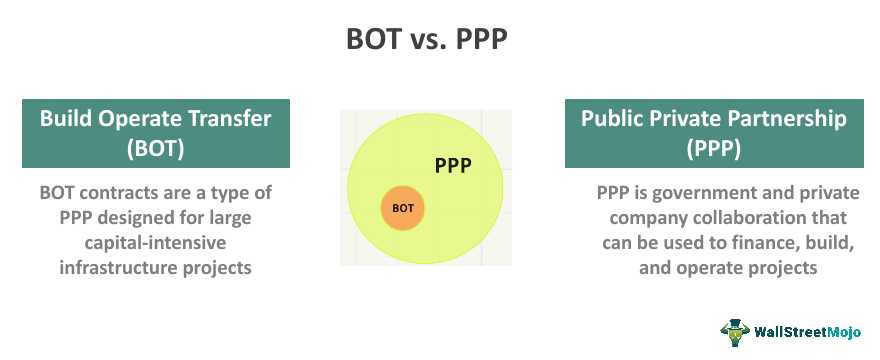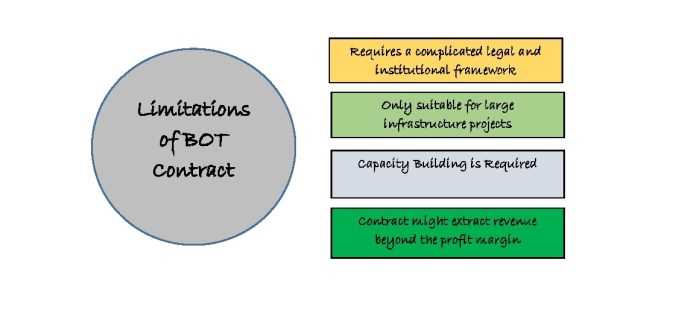What is a Build-Operate-Transfer Contract?

During the operation phase, the private company is allowed to collect revenue from the project, usually through user fees or other forms of payment. This revenue is used to cover the costs of operation and maintenance, as well as to generate a return on investment for the company.
Key Features of a BOT Contract:
1. Risk Transfer: One of the main advantages of a BOT contract is that it transfers the financial and operational risks associated with the project from the government to the private company. This allows the government to avoid upfront costs and reduces its exposure to potential risks.
2. Private Sector Efficiency: By involving the private sector in the construction and operation of infrastructure projects, BOT contracts aim to harness the efficiency and expertise of private companies. This can lead to cost savings, improved quality, and faster project delivery.
3. Long-Term Revenue Generation: BOT contracts provide a mechanism for long-term revenue generation for the private company. By allowing the company to collect revenue from the project, it incentivizes them to operate and maintain the infrastructure to a high standard.
4. Public Control: Despite the involvement of the private sector, the government or public entity retains control and oversight of the infrastructure project. They set the performance standards, regulate the fees charged, and ensure that the project serves the public interest.
A Build-Operate-Transfer (BOT) contract is a type of agreement that allows a private entity to finance, build, and operate a public infrastructure project for a specific period of time. At the end of the contract, ownership of the project is transferred to the government or the public entity that initiated the project.
The duration of a BOT contract can vary depending on the complexity and scale of the project. It can range from a few years to several decades. During the contract period, the private entity is granted the right to collect revenue from the project, either through user fees, tolls, or other forms of payment.
One of the key features of a BOT contract is the transfer of ownership at the end of the contract period. This means that once the contract expires, the infrastructure project becomes the property of the government or the public entity. This transfer of ownership is often accompanied by a predetermined purchase price or compensation to the private entity.
There are several reasons why governments and public entities opt for BOT contracts. Firstly, it allows them to leverage private sector expertise and resources to develop and operate public infrastructure projects. This can help reduce the financial burden on the government and ensure efficient project delivery.
Secondly, BOT contracts can provide a source of revenue for the government through user fees or other forms of payment. This can help offset the costs of infrastructure development and maintenance.
However, there are also risks associated with BOT contracts. The private entity may face challenges in securing financing for the project, managing construction and operational risks, and meeting performance targets. On the other hand, the government or public entity may face challenges in ensuring fair and transparent contract terms, monitoring the performance of the private entity, and managing the transition of ownership at the end of the contract.
Benefits and Risks of Build-Operate-Transfer Contracts
Benefits

1. Infrastructure Development: One of the main advantages of BOT contracts is that they facilitate the development of much-needed infrastructure projects. Governments often lack the necessary funds or expertise to undertake large-scale projects on their own. By partnering with private entities, they can leverage their resources and expertise to build essential infrastructure such as roads, bridges, airports, and power plants.
3. Efficiency and Innovation: Private entities are often more efficient and innovative in project execution compared to government agencies. They have the incentive to complete the project on time and within budget to maximize their returns. Additionally, they bring in new technologies and management practices that can improve the quality and efficiency of the infrastructure project.
Risks

1. Cost Overruns: One of the main risks of BOT contracts is the potential for cost overruns. Private entities may underestimate the costs involved in the project or face unexpected challenges during construction or operation. This can lead to delays and additional expenses, which can ultimately impact the financial viability of the project.
2. Quality and Maintenance Issues: Since the private entity is responsible for the operation and maintenance of the infrastructure project, there is a risk that they may prioritize cost-cutting measures over quality. This can result in subpar infrastructure that requires frequent repairs and maintenance, leading to increased costs in the long run.
Despite these risks, BOT contracts have been successfully implemented in many countries around the world. By carefully assessing the benefits and risks and implementing proper risk management strategies, governments and private entities can maximize the potential of BOT contracts for infrastructure development.
Application in Government & Policy
The use of Build-Operate-Transfer (BOT) contracts in government and policy is becoming increasingly popular as a way to finance and develop large-scale infrastructure projects. These contracts allow the government to transfer the financial and operational risks of a project to a private entity, while still maintaining control over the project’s goals and objectives.
One of the key benefits of using BOT contracts in government and policy is the ability to attract private sector investment. Many large-scale infrastructure projects require significant financial resources, which may be difficult for the government to provide on its own. By partnering with private entities through BOT contracts, the government can leverage the expertise and financial capabilities of the private sector to fund and develop these projects.
Another advantage of using BOT contracts in government and policy is the transfer of operational risks. Under a BOT contract, the private entity is responsible for the construction, operation, and maintenance of the infrastructure project for a specified period of time. This allows the government to transfer the risks associated with the project’s performance and operation to the private entity, reducing the burden on the government and taxpayers.
Furthermore, BOT contracts provide a clear framework for accountability and performance measurement. The contract typically includes specific performance targets and milestones that the private entity must meet in order to receive payment. This ensures that the project is completed on time and to the required standards, and provides a mechanism for the government to hold the private entity accountable for any failures or delays.
However, there are also risks associated with using BOT contracts in government and policy. One of the main risks is the potential for cost overruns and delays. If the private entity encounters unforeseen challenges or difficulties during the construction or operation of the project, it may result in additional costs and delays, which could ultimately impact the government’s budget and timeline.
Additionally, there is a risk of private entities prioritizing profit over public interest. While BOT contracts provide a mechanism for the government to control and monitor the project, there is still a possibility that the private entity may prioritize its own financial interests over the public interest. This highlights the importance of effective oversight and regulation by the government to ensure that the project is being carried out in the best interest of the public.

Emily Bibb simplifies finance through bestselling books and articles, bridging complex concepts for everyday understanding. Engaging audiences via social media, she shares insights for financial success. Active in seminars and philanthropy, Bibb aims to create a more financially informed society, driven by her passion for empowering others.
